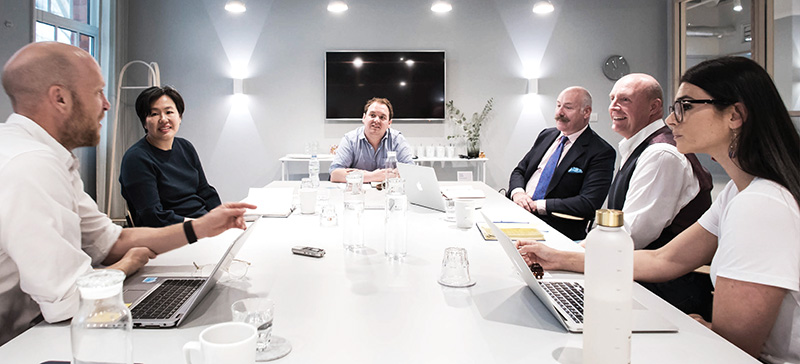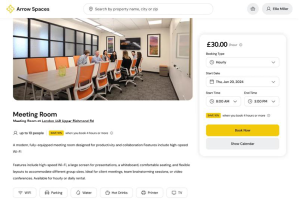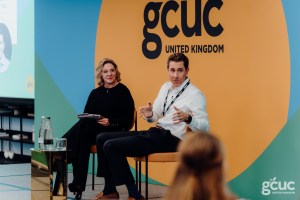Think Tank – Building a Flexible Brand

With more property companies launching flexible workspace brands, Property Week and Yardi gathered a panel of industry experts to identify the secrets of success in a highly competitive market.
Justin Harley (JH) – regional director, coworking, Yardi
Maria Cheung (MC) – director and head of interior design, Squire & Partners
Giles Fuchs (GF) – chief executive, Office Space in Town
Alessa McNally (AM) – head of member’s experience, The Office Group
John Williams (JW) – head of marketing, The Instant Group
Simon Creasey (SC) – (moderator) contributing editor/features, Property Week
What are the key components needed to create a successful flexible workspace brand?
GF: Location, design, building layout, staff, culture, ethos, IT, consistency of customer service. You can go on forever making a list, but all of those things need to be a part of it.
AM: Location is absolutely key. It’s definitely at the top of the list of things we look for when opening up a space. Also member experience. We are here to create a memorable experience for our members.
JW: I agree, it’s all about the member experience. The conventional real estate market is still referring to the ‘occupier’ or the ‘tenant’. They’re thinking about looking after an asset and not providing an experience, which is what flexible workspace providers do so well. Once people experience the flexible workspace market I think it’s a shock when they go back to conventional office space because the level of service just isn’t there.
What makes a great location for a flexible workspace centre?
GF: We previously had a company that covered the whole of the UK and when we opened a property outside London one of my metrics was it had to be five minutes -walk from a Marks & Spencer. In London, our MO is that the location has to be within a four-minute walk – five minutes is probably okay – of a tube or rail hub.
JW: I said two years ago that we were going to start to see the rise of second cities and coworking and flexible space becoming a story in the regions and I’m glad to say I was right. Demand for flexible workspace in cities like Bristol, Birmingham and Manchester is increasing by 25% to 30% every single year at the moment. Those secondary cities in the UK are really flying and we’re also seeing that in Europe and in the States.
How important is design and fit-out to a flexible workspace brand?
MC: It’s become massively important. It should have always been massively important, but the standards have been raised and everyone is really enjoying and realising the benefit of great design in the workspace. It’s no longer about sitting at a fixed desk. We are working in different ways. People want to be able to sit, to stand, to walk around and look at things. Design can enhance and allow different ways of working through the use of things like natural light, biophilia, control of the environment and even acoustics.
JH: One of my favourite spaces in London is [flexible workspace provider] Uncommon. They have a lot of biophilia, but it’s the scent in their buildings that’s really beautiful. Smell is one of the most important senses.
JW: I think there is a perception of how coworking and flexible space should look; it’s a bit like coworking design bingo. There should be exposed brickwork, free beer, lots of dogs and avocados on tap, but that’s not the case. There is a real individuality of different approaches and different spaces being provided.
In the flexible workspace and coworking sector the word ‘community’ pops up time and time again. How important is it to create a sense of community in your flexible workspace?
MC: When we created The Ministry [The Ministry of Sound’s private members club and coworking space] we worked closely with them to define what they wanted to create, who was their target audience and who did they want to invite into their space.
JH: With community, it’s about whether you want to get involved or not and it’s about giving people the opportunity to get involved.
AM: I agree – it’s very important that people are given the opportunity to get involved. If you want people to connect with one another you have to create spaces for people where they can connect with fellow members if they want to.
JW: We were at a big coworking conference in Denver recently and to those guys community is everything. They run at really high occupancy rates, retain clients for a really long time and know them by name, know their families and their issues, and work incredibly hard to keep them. You can be really cynical about WeWork’s view of community, but when you understand the broader context in the sector of what community actually means it’s remarkable.
One of the biggest challenges traditional landlords face when entering the flexible workspace sector is that they have been used to dealing with just a handful of tenants in a single building, but now might have to deal with hundreds. What is the best way to overcome those operational challenges so you can offer high-quality customer service?
JW: Some really good landlords in London have asked to see our data, so we’ve presented to their boards and had very open discussions in which they’ve said customer service terrifies them, because they’ve never spoken to a customer in probably 100 years of existence and they’ve not needed to because their customer is the bank. Famously one landlord said to me: “We just close the door, throw them the keys, then walk away and don’t see them for 10 years – hopefully”. Operating flexible workspace requires a completely different way of thinking. They have to think about customer service and digital lead generation. Landlords face various issues trying to get into this market and there will be big growing pains.
AM: You have a very human experience in flexible workspace centres, whereas historically landlords have been rent collectors, so it’s an almighty shift for them. They really need to have a strong understanding of what it entails to operate at this level.
What role can technology play in terms of on-boarding and reducing some of the friction that exists in the market and also in terms of managing relationships with customers?
JH: If you look at all the surveys of why people say they are leaving a building, one of the top three reasons is because the internet is not good enough, or their experience of the internet is not good enough. We all know that you have to get as much bandwidth as you can get and it has got to work. It also comes down to what data insights can you get about what is really happening in your buildings because you can then make customer-informed decisions.
As more and more landlords come into this space and there is increased competition, data is going to become increasingly important, because the winners will be the people who know their customers the best – and that can only come from solutions that provide real data insight.
GF: On the IT front you have to divide it into several different sectors. The first one is broadband connectivity, which is absolutely key. Then there is the running of the business and the CRM. So how do you look after the client? That starts with the on-boarding – we use Yardi’s Medusa and we think it is the best thing out there. Then there is the accounts package. We’ve just gone through a year-long process to try to find the best system out there and there was nothing we felt was fit for purpose yet. So we’ve had to take the best of breed in all those different areas – CRM, on-boarding, broadband management, accounts – and stick them together to create what is now our own bespoke package. Someone at some point will come along and solve that problem, but it’s not solved yet.
JH: Well, watch this space…
How big a role might data play in terms of informing the design and fit out of flexible workspace?
MC: I think it will play a really big role because data will tell you how people are using the space. So from a spatial point of view it will tell you the number of meeting rooms you need and the amount of break-out space you need to provide. What’s interesting for us – and we’ve designed space for a few different flexible workspace operators – is they all use different metrics.
For instance, the amount of break-out space or shared facilities at The Ministry is really quite high. We’ve just worked with a new brand called XY whose idea is all about bringing purpose to people’s workspace, so they want to facilitate a lot of learning in the workspace. As a result of that, their level of shared facilities, conferencing space, tea points and shared booths is really high – much higher than we’ve ever done before. Understanding how people use the space completely dictates how you design it.
What single piece of advice would you give a newcomer that wants to break into this market?
GF: Employ the right people.
JH: Know who your customer is.
AM: If you’re going to do it make sure it’s a meaningful effort and you really go for it.
JW: Nail the brand – the brand incorporates every element of what we’ve just discussed.
MC: Make sure you employ a great designer who delivers space that meets all of the requirements we’ve just been talking about.
Reproduced with kind permission of Property Week.




